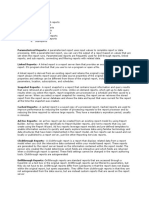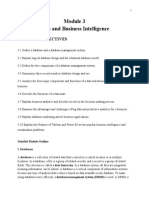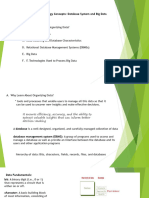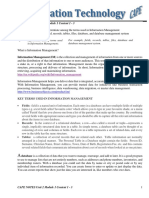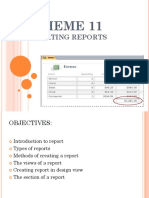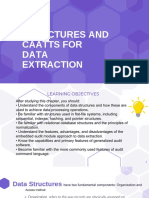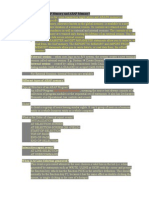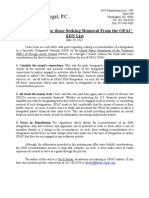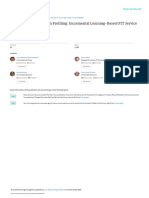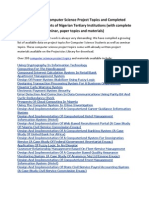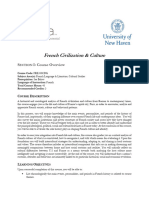Sections
About sections A section is a component that determines the logical structure of the report. When you design a report, sections act as containers for other components. When you run the report, sections receive the incoming data rows and determine which components to instantiate to create the appropriate output. Sections appear only as icons in the structure pane of Design Editor. When you look at the report design in the layout pane of Design Editor or run the report and view it, you do not see the sections themselves. The only visible sign of a section's existence is the effect it has on the organization of the visual components, such as frames and controls.
Report Section Retrieves information from a data source and contains components to display that information. Example of use:- Design a report or subreport. Group Section Sorts data on a common field, such as customers grouped by state, and contains components to display the data group. Example of use:- Design a grouped report to print orders for customers in various states. Sequetial Section Contains several frames or sections that display or print in a specified order. Example of use:- Print two related reports, such as a sales history and a staffing history, one after the other. Conditional Section Uses a conditional expression to determine which of two frames or sections to display or print. Example of use:- Print different frames for salaried or commission employees.
�Parallel Section Contains two or more report sections, sequential sections, or group sections that appear or print simultaneously in different flows on the same page. Example of use:- Present two related reports, such as employee addresses and salary histories, printed side by side for easy comparison.
Understanding how reports get data
Data source Stores data. A database is the most common place to get data, but a database is not the only option. Connection Cable or other communication device and communication software that provide the communication link with the database. For more information about connections, see About data source connections. Connection component Stores the information that the report needs to connect to the database. For more information about connections, see About data source connections. Data source component Using the connection, selects data from the data source and puts the data into a data row. This chapter concentrates on one type of data source component called a query data source. For more information about query data sources, see About query data source components. Data row A set of variables containing the data from the data source. The format of this row is defined by the data row component in the report design. For more information about data rows, see About data rows. Data filter (Optional) One or more filters perform additional steps to put the data into the form required by the report. Each filter passes a data row on to the next filter in the data stream. If there are no filters, the data row from the data source component is passed directly to the report. For more information about filters, see About data filters.
�Report The report receives data and displays it. The report must contain at least one report section component. For more information about report sections, see About report sections.

